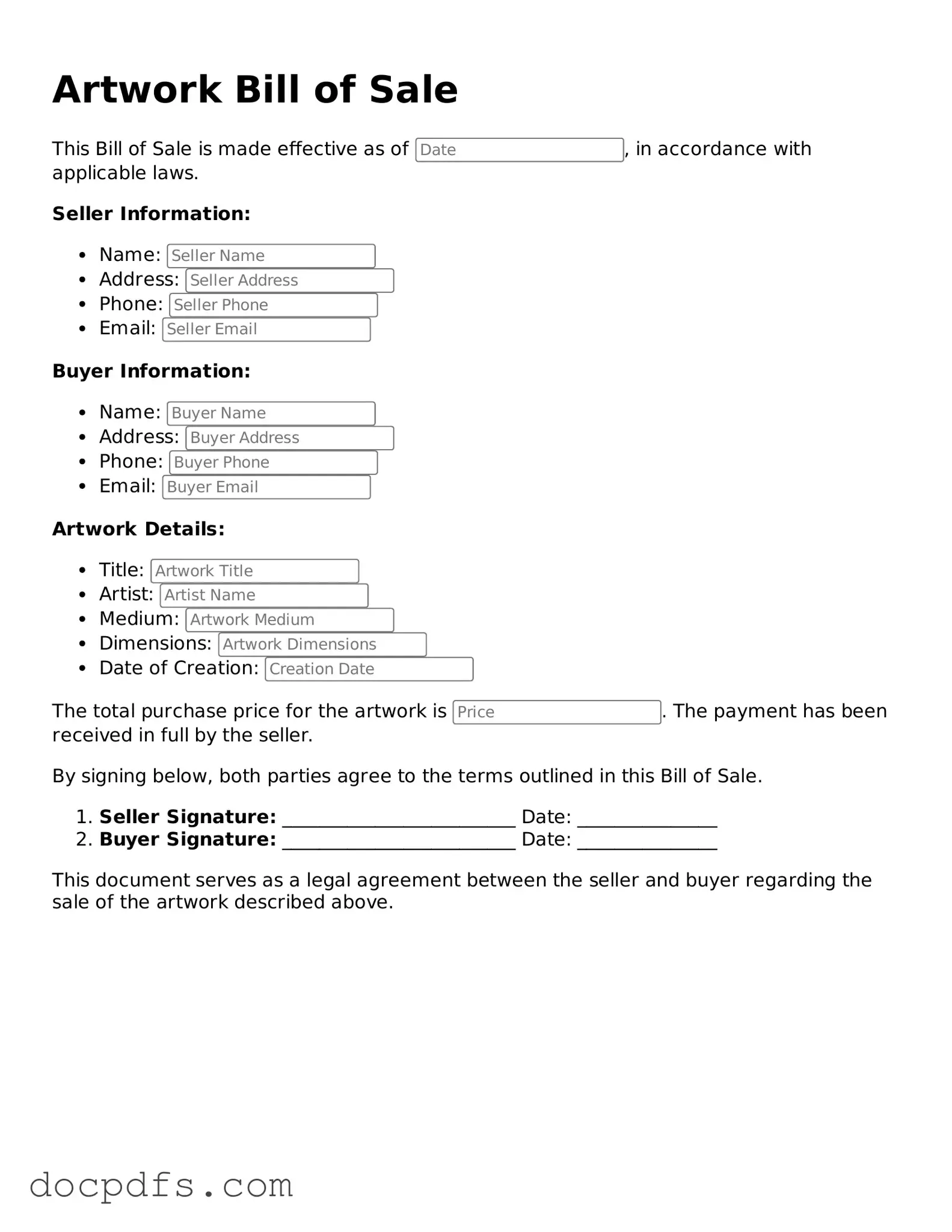The Artwork Bill of Sale form serves as a crucial document in the art transaction process, ensuring that both the buyer and seller have a clear understanding of their rights and obligations. This form typically includes essential details such as the names and contact information of the parties involved, a description of the artwork being sold, and the agreed-upon purchase price. Additionally, it often outlines the terms of the sale, including any warranties or representations made by the seller regarding the authenticity and condition of the artwork. By providing a written record of the transaction, the Artwork Bill of Sale helps to protect the interests of both parties, reducing the potential for disputes in the future. Furthermore, it can serve as proof of ownership, which is particularly important in the art world, where provenance can significantly impact an artwork's value. Understanding the components and significance of this form is essential for anyone engaged in buying or selling art, whether as a casual collector or a professional dealer.
